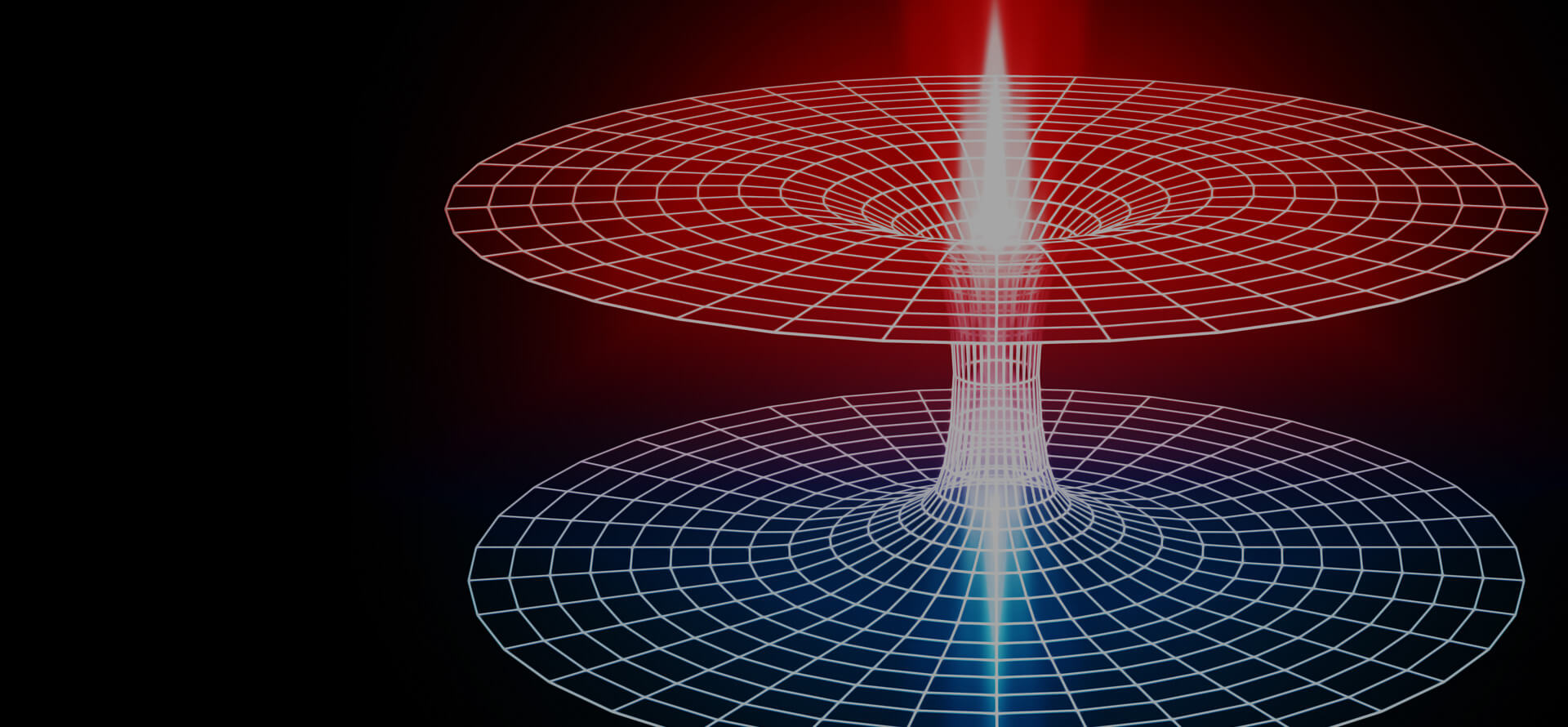Last April the Event Horizon Telescope (EHT) sparked international excitement when it unveiled the first image of a black hole. Today, a team of researchers led by a group at the Harvard Black Hole Initiative (BHI) have published new calculations that predict a striking and intricate substructure within black hole images from extreme gravitational light bending.
“The trailblazing Event Horizon Collaboration achieved the first image of a black hole, a full century after its prediction by the theorists Einstein and Schwarzschild. Understanding the intricate details of this historic experimental observation has forced theorists like myself to think about black holes in a new way,” notes Andy Strominger, who is the Gwill E. York Professor of Physics at Harvard. “In collaboration with our experimental colleagues, we have both theoretically discovered a surprising self-similar sequence of mirrored `photon subrings’ encircling the black hole, as well as laid the foundations for their experimental observation via future space-based extensions of the Event Horizon Telescope.”

Because black holes trap any photons that cross their event horizon, they cast a shadow on their bright surrounding emission from hot infalling gas. The “photon ring” encircles this shadow, produced from light that is concentrated by the strong gravity near the black hole. This photon ring carries the fingerprint of the black hole—its size and shape encode the mass and rotation or “spin” of the black hole. With the EHT images, black hole researchers have a new tool to study these extraordinary objects.
The research team included observational astronomers, theoretical physicists, and astrophysicists.
The Black Hole Initiative was founded in 2016 to bring to bear an array of disciplinary approaches to black holes—perhaps the most elusive and important species in the astrophysical zoo,” explains Peter Galison, who is the Joseph Pellegrino University Professor of the History of Science and of Physics at Harvard University. “That coordinated approach of physics, astrophysics, history and philosophy of science, has yielded fruit in the analysis of the sequence of photon rings, light corralled into orbits around the black hole. Some go around once before escaping to us, others twice, three times, and more before landing in our telescopes. As we peer into these rings, first, second, third, etc., we are looking at light from all over the visible universe; we are seeing farther and farther into the past, a movie, so to speak of the history of the visible universe.”
These subrings offer a host of new ways to study black holes. “A black hole strongly bends light rays in its vicinity, acting as an intricate lens constituted of warped space and time,” explains BHI researcher Shahar Hadar. “This lensing determines special relations between the subrings which are fixed by Einstein’s theory of General Relativity. Measuring the subrings would therefore allow a completely novel, precision test of Einstein’s theory in the region very close to the black hole’s event horizon.”
“Bringing together experts from different fields enabled us to really connect a theoretical understanding of the photon ring to what is possible with observation,” notes George Wong, a physics graduate student at the University of Illinois at Urbana-Champaign who was visiting the BHI when the project was conceived. Wong developed software to produce simulated black hole images at higher resolutions than had previously been computed and to decompose these into the predicted series of sub-images. “What started as classic pencil-and-paper calculations prompted us to push our simulations to new limits.”
The researchers also found that the black hole’s image substructure creates new possibilities to observe black holes. “What really surprised us was that while the nested subrings are almost imperceptible to the naked eye on images—even perfect images—they are strong and clear signals for arrays of telescopes called interferometers,” says BHI researcher Michael Johnson.
“The first image of the M87 black hole announced last year was just the beginning. These new theoretical results show that by improving the Event Horizon Telescope we can use the unique properties of the photon ring to study black holes in exquisite detail,” adds Sheperd Doeleman, who is the Founding Director of the EHT. “A ‘next-generation’ EHT, including links to radio dishes in space, will sharpen our focus further, turning the event horizon into a true cosmic laboratory for testing our most fundamental theories.”
“Black hole physics has always been a beautiful subject with deep theoretical implications, but now it has also become an experimental science,” says Alex Lupsasca from the Harvard Society of Fellows. “As a theorist, I am delighted to finally glean real data about these objects that we’ve been abstractly thinking about for so long.”
The research team included four senior faculty and co-founders of the BHI: Andrew Strominger, Peter Galison, Ramesh Narayan, and Sheperd Doeleman. Nine BHI scientists were also involved, in addition to those listed above: Shahar Hadar, Daniel Kapec, Andrew Chael, Daniel Palumbo, Lindy Blackburn, Maciek Wielgus, Dominic Pesce, Joseph Farah, and James Moran. The remaining paper co-authors were Andrew Chael and Charles Gammie.
The results were published in Science Advances. Watch the beautiful explanatory animation produced for this discovery.
This research was supported by grants from the National Science Foundation, the Gordon and Betty Moore Foundation, the John Templeton Foundation, the Jacob Goldfield Foundation, the Department of Energy, and NASA. The opinions expressed in this publication are those of the author(s) and do not necessarily reflect the views of the John Templeton Foundation.
The following infographics further explains this remarkable discovery:




